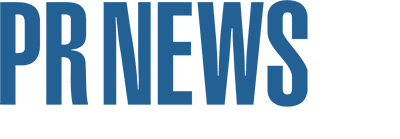
Academic medical centers face a stark reality. With every news headline, the federal funding they have long relied on through grants and other measures grows increasingly at risk. These institutions, many of which sit at the intersection of innovation, education and public health, must act with urgency and foresight to prepare for potential cuts.
The question isn't if cuts will happen, it's when. For some institutions, like Johns Hopkins University and Rutgers University School of Public Health it's already happening. While there may be little that can be done about the cuts themselves, communication with key audiences, rooted in resiliency, advocacy and transparency is critical to avoid confusion and reputational damage.
To communicate this strategically, academic medical centers must do three things—right now:
- Communicate early and honestly: Don’t wait until cuts take effect. Proactively share what’s known, what’s uncertain and what steps you are taking.
- Pair data with human impact: Share real-world examples of how federally-funded research impacts everyone: individually, locally and collectively across the nation.
- Tailor your message in a cohesive manner to different audiences: Develop clear talking points for each stakeholder group—legislators, patients, staff, researchers, donors and the public—so everyone understands how funding disruptions directly or indirectly affect them.
So, what role can academic medical centers play in influencing public policy and generating a ripple effect of community support—all while communicating with candor to patients and staff directly impacted?
Legislative Outreach
To build immediate and lasting support, institutions must learn to tell their stories in a clear, compelling and cohesive manner. The obvious audience first is with legislators, those who wield a certain power as elected officials. Telling the story to legislators is painting a picture of the wide influence of your work on their constituents:
- Are you employing local residents?
- How will job losses affect the local economy?
- Are residents enrolled in your clinical trials?
- If funding for treatment abruptly stops, what are the consequences?
Specifics are important.
How you approach legislators is contingent upon established relationships, as well as those you need to cultivate through outreach.
If you don't have those relationships in place right now, you need to begin nurturing them. That way, if the unexpected happens, you have those individuals in place to help you counter and push back.
Expanding an Audience Beyond Legislators
But advocacy should extend well beyond Washington, D.C. and state capitals. Aside from state and federal lawmakers, institutions should engage with local media, alumni networks and the local community. Talking points need to be readily available. Now is the time to embrace any and all public speaking opportunities.
Make your case so the public can amplify it.
It’s a trickle-up approach that creates added pressure from not only you, but from the community as well. A well-informed public is more likely to support continued investment in research and hold policymakers accountable when cuts are proposed. Cuts affect the centers directly as well as the health of the patients they serve, communities they support, jobs and the local economy.
For legislators who fail listening to public outcry, it may also impact their job come next election cycle.
Communicating Openly With Staff and Patients
Communication must be transparent, timely and grounded in empathy, especially when addressing those directly affected by federal funding cuts. Patients enrolled in clinical trials deserve clear information about how a disruption may impact their care. While some trials may continue under existing funds or receive funding by alternate sources, others may face delays, stoppage, or outright cancellation.
Communicating these possibilities early helps preserve trust. It allows patients to make informed decisions around their treatment and seek other options.
The same applies to employees whose positions may be at risk. Rather than relying on rumors or silence, leadership should offer honest updates about:
- The institution’s financial outlook
- What steps are being taken to secure other funding sources
- What support will be available if layoffs or reassignments occur
Transparency paired with compassion and timeliness ensures that even difficult messages are delivered with dignity and care.
Key Takeaways
In its annual NIH Economic Impact Report FY2024, United for Medical Research found that for every $1 invested through grants, $2.56 is created. The analysis showed that the grants supported nearly 408,000 jobs in the U.S. and brought in nearly $95 billion in new economic activity.
The work of academic medical centers is not an endless hole of sunk taxpayer costs, but a continuous return-on-investment: for health and our economy. Despite this, cuts and freezes continue.
By undertaking strategic preparation and communications planning, academic medical centers can proactively advocate for their institutions and speak to the vital work they do in the name of science, medicine and public health.
This alone is worth its weight in outcry. But on an even more granular level, academic medical centers are the backbone of many communities across the U.S.: Local economies are at risk, jobs at stake and patient and community health in potential peril.
The current level of unpredictability is high—which means now is the time to act. Not when the cuts come for you. But before.
Shannon Moylan is Head of Strategic Communications at Unlock Health.
